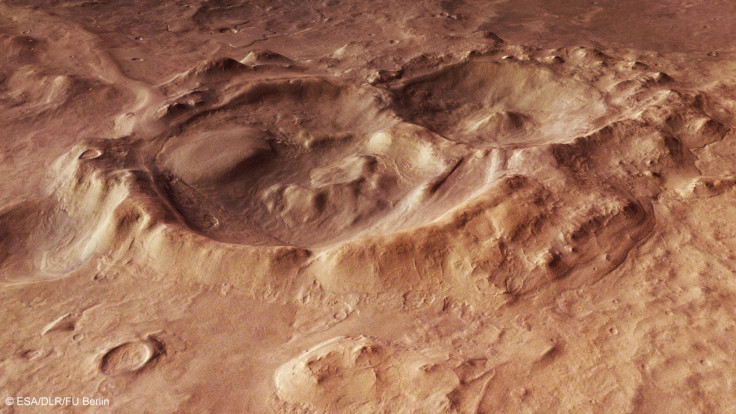Curiosity Rover images of crater show evidence of 'recent' running water on Mars

Images of the Istok crater taken by Curiosity Rover on Mars show evidence of running water on the Red Planet in "recent" years.
European scientists have based their conclusion on well-defined gullies on the young Martian crater, which suggest waterlogged debris flowed down slopes.
As the crater is believed to be a million years old, the gullies may also have been created at the time, scientists believe.
If it is indeed signs of water on Mars, there are high probabilities of finding life as well. Or at least remains of recent life. And the Istok crater would be a good place to look for signs of such life.
Earlier observations made by ESA's Mars Express indicated massive hidden deposits of water/ice under the long chain of hills called Phlegra Montes situated on the planet's northern hemisphere.
The latest findings are described in the journal Nature Communications.
Researchers used data from the HiRISE camera on Nasa's Mars Reconnaissance Orbiter to map out the gullies in three-dimensional detail and compared them with similar gullies carved on Earth in Iceland or Atacama desert.
The debris flows likely had around 20% to 60% water content in them in order to carve the tracks that they did, lead author Tjalling de Haas, an Earth scientist at Utrecht University told LA Times.
The rate of flows were also similar to those on Earth.
Axial tilt and climate
But for liquid water to have flowed recently on Mars, swings in the planet's axial tilt must have produced very big changes in climate.
Just like the Earth's axis, the Red Planet's tilt has shifted during the glacial-interglacial period, but from a slight 15 degrees to a strong 35 degrees.
The sharper tilt would have heated up the planet and caused the ice at the poles to sublimate as water vapour and fall as snow.
When that ice or snow melts, the water soaks into the ground, and the debris flows down the slopes.
Mars is currently in the "glacial" part of the cycle, where there is no liquid water.
Gullies in other locations do not indicate recent happenings as at Istok implying either the weather at the crater was localised or the source of water was something other than from the water cycle.
© Copyright IBTimes 2025. All rights reserved.




















